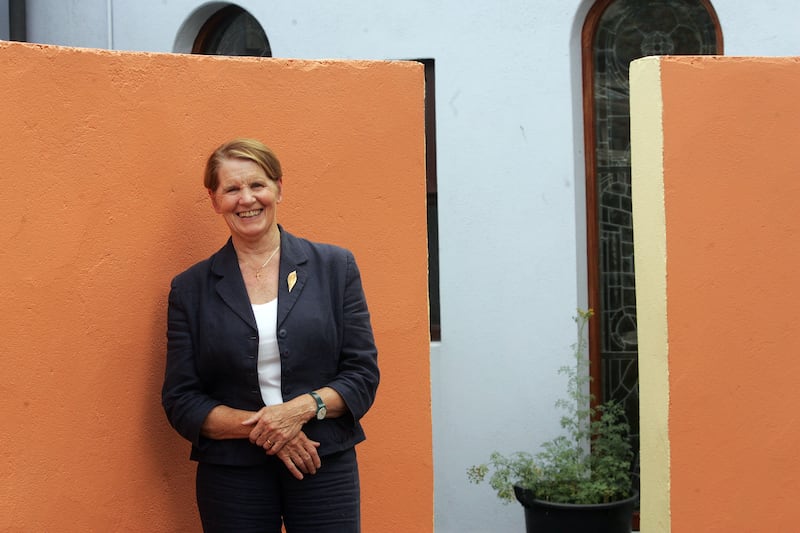“This is a dumbing-down of standards that should be about making homes, not units. I fear what kind of world we’re making.”
Architect Gerry Cahill, who has worked on social and affordable housing developments for more than 40 years, is not impressed by the new apartment guidelines issued by Minister for Housing James Browne on Tuesday.
“The fear is that if you create a society of one-bedrooms, where do you go from there? How do you make a family? It works to get you out of your parents’ box room, but where next?” Cahill asks.
The new guidelines allow for greater density and smaller units in apartment blocks, aimed at closing a viability gap between what they cost to build and what developers can sell them for.
READ MORE
They will “get apartment-building moving” and “ensure [they] are viable to build”, Browne said on Tuesday.
The guidelines reduce the minimum size of a studio apartment to 32sq m, down from 37sq m.
There will also be no restrictions on the specific mix of units within a development.
Previously the number of one-bedroom apartments or studios within any apartment scheme was restricted to 50 per cent, with no more than 25 per cent of the entire scheme allowed to be studios.
Apartment complexes can also have fewer windows, and there will be more units using one lift.
The Department of Housing claims the changes will result in an average saving of between €50,000 - €100,000 per unit.
But will it work in driving down costs and ramping up construction? And what could be the unintended consequences of this loosening of standards?
Many discussions over the last number of days focused on how exactly the department came to this cost savings figure of €50,000-€100,000 per unit, and how accurate it might be.
The department said it comes from engagement with the Land Development Agency (LDA), the State’s affordable-housing delivery body.
Work by quantity surveyors within the LDA showed that when all of these measures were combined they could result in these savings per home, department sources said.
The Minister was asked on Wednesday if he would publish these costings, and he said he would - but no such evidence has been produced so far.
Other housing experts have crunched the numbers and have come to a very different conclusion.
Paul Mitchell, director of construction consultants Mitchell McDermott, ran the numbers on all of the changes combined and says the real savings are €28,000-€39,000 per unit.
Taking the newly designed studio as an example, the measures resulting in the largest savings are the reduction in floor space - which makes a saving of between €6,000 and €7,000 - and the reduction in windows, which saves another €4,000 to €8,000.
All of which goes to say that a figure of between €50,000 and €100,000 seems a long way off what industry professionals expect to save.
Another factor is that land values could increase because it will be possible to build many more units on the same site.
“I think the risk here now is developers will all revalue their sites on the basis of fitting more studios which are much more lucrative. That then increases the site value, and it stops anything else happening except small units,” Orla Hegarty, assistant professor at the UCD School of Architecture, says.
Concerns had been raised that this change to standards would result in further delays to building, as developers would have to resubmit planning applications to benefit from them.
There was a belief that this in turn would clog up the planning system, put a pause on building and ultimately result in higher costs.
The Department of Housing had clearly thought about this, and believes it has a solution: an amendment to planning laws to allow changes to be made to plans without the need for a fresh application.
The Minister is expected to bring forward the amendment to the Planning and Development Amendment Bill (2025) next week. This will allow developers who currently have planning permission to submit revised drawings and have their amendments expedited through the planning system and automatically granted on a “permitted alteration” basis without being subject to an entirely new planning process.
There could be a fly in the ointment, however: any change to a planning permission would restart the clock for judicial review appeals to be made, legal sources say.
Also, the amendment itself could be challenged in court, the guidelines could be challenged and an individual development could be challenged.
“These aren’t minor modifications - you’re talking about increasing the density of the development, which means more gardens, more electricity connections, more traffic, more people. There’s a constitutional right to participate in the planning system if the development could have a significant effect on you,” explains a legal source, who did not wish to be named in case they were involved in future cases.
Then there’s the question: what will they be like to live in?
It is hard to underestimate just how small a 32sq m studio is for a home, but picture this: you can fit eight of them into a tennis court.

[ Apartments with fewer windows sound okay, until you live in oneOpens in new window ]
Now imagine there is no limit to how many of them can be gathered around one lift shaft, or how many of them are in one apartment block. Designing a block this way often means long, dark corridors not unlike a hotel, with dozens of doors off one hallway.
“If you’re that close to your neighbours, you can smell every meal that’s cooked. You can hear every argument. It’s very bad for your mental health to not have privacy and to have that level of intrusion,” Hegarty says.
“In a space this small there is only one place to put your bed, one place to put your sofa. There’s nowhere to put a cot. There’s hardly a place to put a washing machine in the kitchen, and if you have to fold a pram or use a walking frame, there’s no space,” Hegarty says.
“I always think of Irish families and where they will go for Christmas. There’s a presumption that this is just temporary, and they all have middle-class parents who’ll take them, and they’re only there for a little while. But that’s not the case. These are people’s homes forever,” Hegarty says.
There is a fear among many architects that this high-density, small-space living is unsustainable and does not serve the long-term needs of anyone except those who have no other choice.
“How do you live in one space where you are cooking, cleaning, sleeping; where you can’t escape from yourself or your partner?” Cahill asks.
“We’re not creating units, we’re creating homes, and we need to think about the best way to achieve that.”
He designed a development with Sr Stanislaus Kennedy called Stanhope Green in Stoneybatter which converted an old convent into housing for people who were previously homeless.

The project was deemed a great success, providing a communal garden called The Sanctuary, a library and other community spaces.
“Sr Stan’s approach was that everyone deserves a home, not a unit. Stanhope Green was a model for communal living,” Cahill says.











